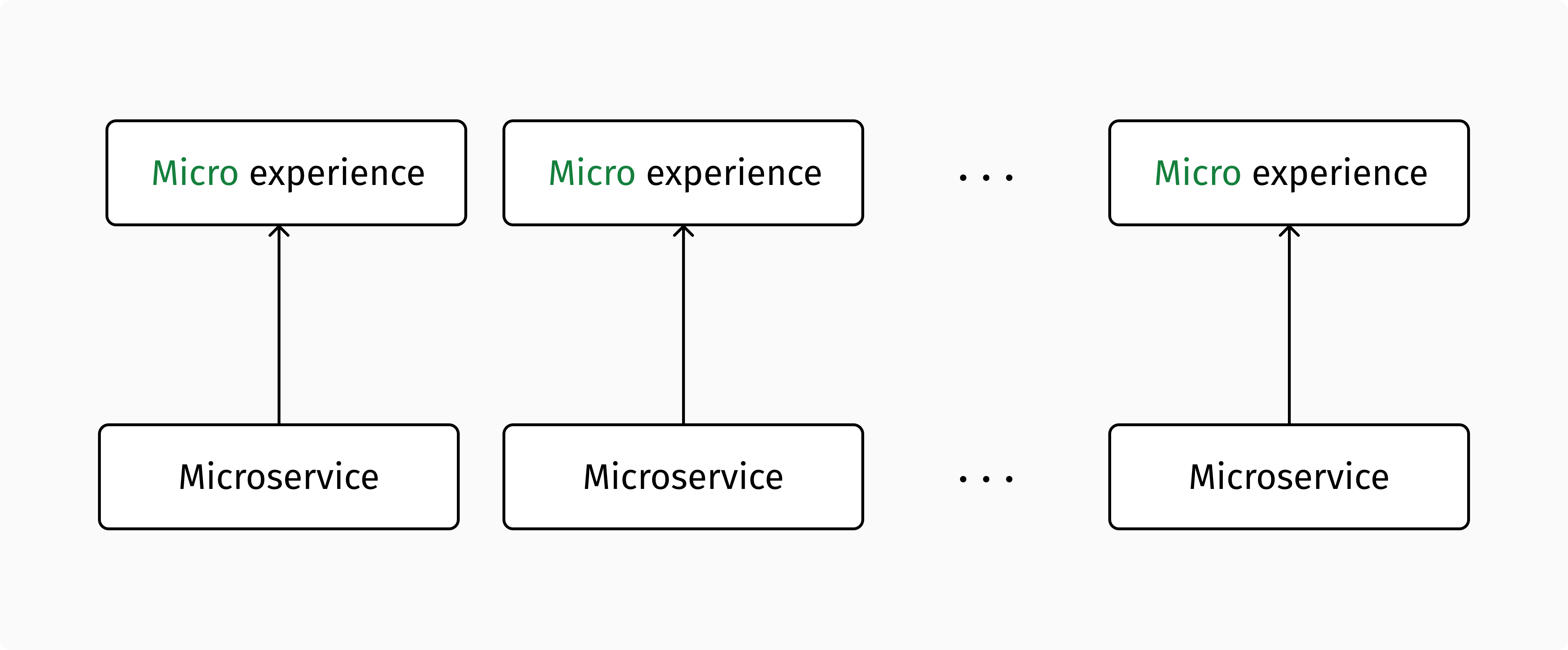There is a lot of discussion about the use of microservices and micro frontends for splitting monolithic platforms into highly specialized, independent functions that are responsible for a small portion of the architecture. After the services are created, they are put together as building blocks for the frontend experience, which remains monolithic. In fact, customers aren't even aware of what the site's architecture is. In reality, they just don't care. In so far as the website looks great, is fast and feels secure, people are okay with whatever architecture it uses.

But there's another way to use microservices and micro frontends, one that can be perceived much better by customers. Instead of reassembling those services into one frontend experience, it uses them to construct many micro experiences. Each of those micro experiences can be highly personalized, independent of one another, and temporary by design, as they are meant to last only for one shopping session.

Imagine a customer asking an online sales assistant for advice over the phone. It should be possible for the sales assistant to share a selection of products or a prefilled checkout page with the customer through a simple URL, rendered as a micro frontend, that would allow the customer to buy those products without having to visit the .com website.
Another example would be a QR code printed on a physical product. Friends could scan it to buy the same product, with a highly transactional experience that brings them directly to the checkout page. If that QR code appears on a bottle of wine, for example, it could be scanned to reorder that wine, since it's so good. I could list dozens more examples. The possibilities are endless. Essentially, a micro shopping experience is possible wherever you can share a link.
This is a completely different paradigm from a classical ecommerce website. Rather than having customers browse a large catalog of products that look the same for everyone, they can be offered exactly what they are looking for. It's a modern approach to product discovery. Push over pull, with much lower traffic but a very high conversion rate. And it can be a game changer for those business owners who struggle to attract highly targeted traffic to their website.